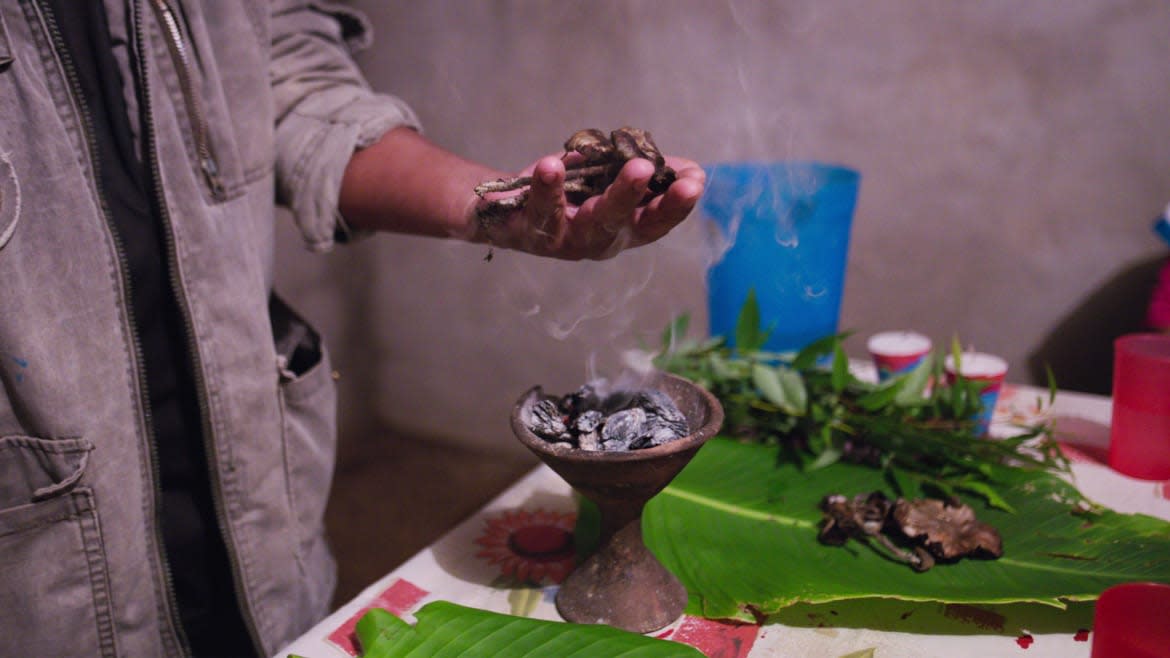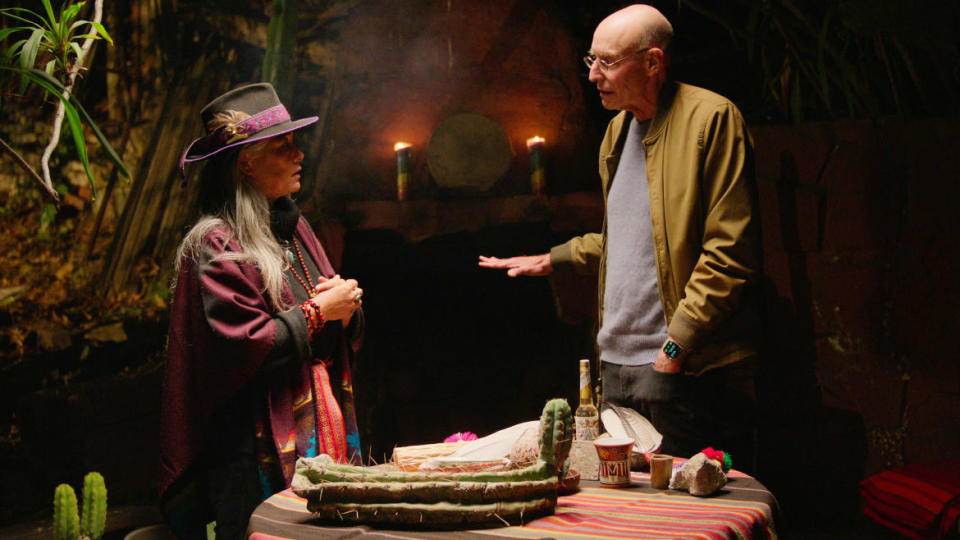‘How to Change Your Mind’ Examines How the U.S. Government Suppressed Life-Changing Psychedelics

- Oops!Something went wrong.Please try again later.
It’s likely that anyone pressing play on Netflix’s latest docuseries How to Change Your Mind is already well-versed in the magic of so-called psychedelics.
But whether you’re an experienced “psychonaut” or a curious homepage scroller, you’ll be treated to an informative, and sometimes moving, deep dive into the healing properties of these substances and the reactionary moves of governments who see them as threats to their power.
Each episode of the four-part series, based on journalist Michael Pollan’s bestselling book from 2018, individually tackles LSD, MDMA, psilocybin—the compound found in magic mushrooms—and mescaline, a compound in cacti, like peyote used by Native Americans, that is nonetheless illegal to ingest in the U.S.
‘FBoy Island’ Season 2 Is Summer Sleaze at Its Oiled-Up Finest
Immediately fascinating is the relatively recent discoveries of LSD and MDMA, the two most recognized and referenced of the four.
LSD was first synthesized by Albert Hofmann in 1938. The Swiss chemist, we learn, was developing a new drug for women who had just given birth when he stumbled upon ergot, a fungus that grows on rye and other plants. He broke it up into compounds, one of which was LSD, and famously took way too much of the world-bending drug.
How to Change Your Mind dramatizes this consequential first acid trip with remarkably stunning and realistic visuals. (No smiley faces and melting, neon-hued pizzas here.) What followed was an “incredibly fertile period of research” during which Hofmann and his team shipped out boxes of LSD to any researcher that wanted to study it.

Journalist Michael Pollan in How to Change Your Mind.
Some of those fell into the hands of researcher Humphry Osmond, another in a handful of heroic figures championed by the series. Until then, the drug had been classified as a “psychotomimetic” for its ability to mimic symptoms of psychosis. Seeking to change this negative connotation, Osmond rechristened it with a playful rhyme, “To fathom hell or go angelic, just take a pinch of psychedelic,” a new word meaning “mind-manifesting.”
“Everything was brilliantly sharp and significant. If I fixed my attention on a flower, I felt that I could spend all day in contemplating it,” Osmond says in archival footage.
The episode follows as LSD “escapes the laboratory,” in Pollan’s words. It takes on many lives as the subject of a controversial study involving student participants at Harvard and a symbol of the youth-led anti-war counterculture of the 1960s, contributing to Nixon’s order for an “all-out offensive” against drugs. Eventually, all research was halted and buried in forgotten articles in 1970, when it was branded a Schedule I drug with no medical benefits.
The episode takes a few minutes to find its footing, with Pollan’s professorial presence testing the viewer’s patience at the outset. Also taking away from the history lesson are the hit-or-miss descriptions of LSD’s effects. Every experience depends heavily on the “set and setting” of each user, meaning that explaining a trip can easily sound as nebulous as telling someone about your dreams.
The third episode, on MDMA, is far less interesting, focusing more on its recent introduction into the world of therapy than its far more common use as a party drug—part of the documentary’s overall mission to reframe its substances as useful tools in mental health.
Much like acid, MDMA was patented by researchers at Merck who were looking for a blood-clotting agent. This was back in 1912, more than two decades before LSD was synthesized. The drug sat on a shelf until the 1970s, by which time its patent had expired and chemist Sasha Shulgin was able to synthesize it, though we never quite learn how he got his hands on it. (His wife Ann Shulgin, who co-wrote two books on the stimulant with him, died on Saturday at the age of 91.) Shulgin introduced MDMA to psychologist Leo Zeff, who describes it as creating “love puddles” among groups of users.
MDMA works differently from the other three, which activate the brain’s serotonin 2A receptors. Instead, it floods the brain with mood-boosting serotonin and oxytocin, the same hormone activated in breastfeeding moms.
The drug had been used in small therapy sessions until the early ’80s, when it was demonized by government officials and a complicit media ecosystem. After finding popularity at raves and clubs in the U.S. and U.K., it was made illegal in the U.S. in 1985. That same year, talk show pioneer Phil Donahue, of all people, exposed the Drug Enforcement Administration’s fixation on the substance in an episode of his show that doubles as a delightful gotcha moment in this series. “What are you concerned about? A lot of young kids bouncing around?” Donahue asks a DEA official, who answers that it’s harder to arrest people on MDMA because the drug isn’t illegal. “But you really want to, don’t you?” Donahue presses. The official responds, “I think it’s important,” thus revealing everything you need to know about the War on Drugs.
Because MDMA is the first one to make its way to legitimate research settings—largely thanks to the tenacity of Rick Doblin, a “passionate amateur” who took it upon himself to earn a PhD and write a thick dissertation on how to get it approved for treatment—we get a lot of footage of intimate therapy sessions and moving testimonials from patients whose lives have been vastly improved by therapeutic doses.
One woman, who arrived at her mom’s house to find that she had killed herself along with her partner and her best friend, describes being able to break through the “anxiety and fear loop” that governed her life after the traumatic event. MDMA, she says, allowed her to access the same kind of joy she felt as a child playing in the snow.
MDMA is also a Schedule I drug, but recent Phase 3 trials by MAPS, Doblin’s organization dedicated to the study of psychedelics, have opened up the possibility for legal, supervised use at clinics throughout the country. The trials found that 88 percent of PTSD patients treated with the drug experienced “fundamental shifts” on “self-capacity, affect regulation, and attitude toward those around them.”
Get the Daily Beast's biggest scoops and scandals delivered right to your inbox. Sign up now.
Stay informed and gain unlimited access to the Daily Beast's unmatched reporting. Subscribe now.

